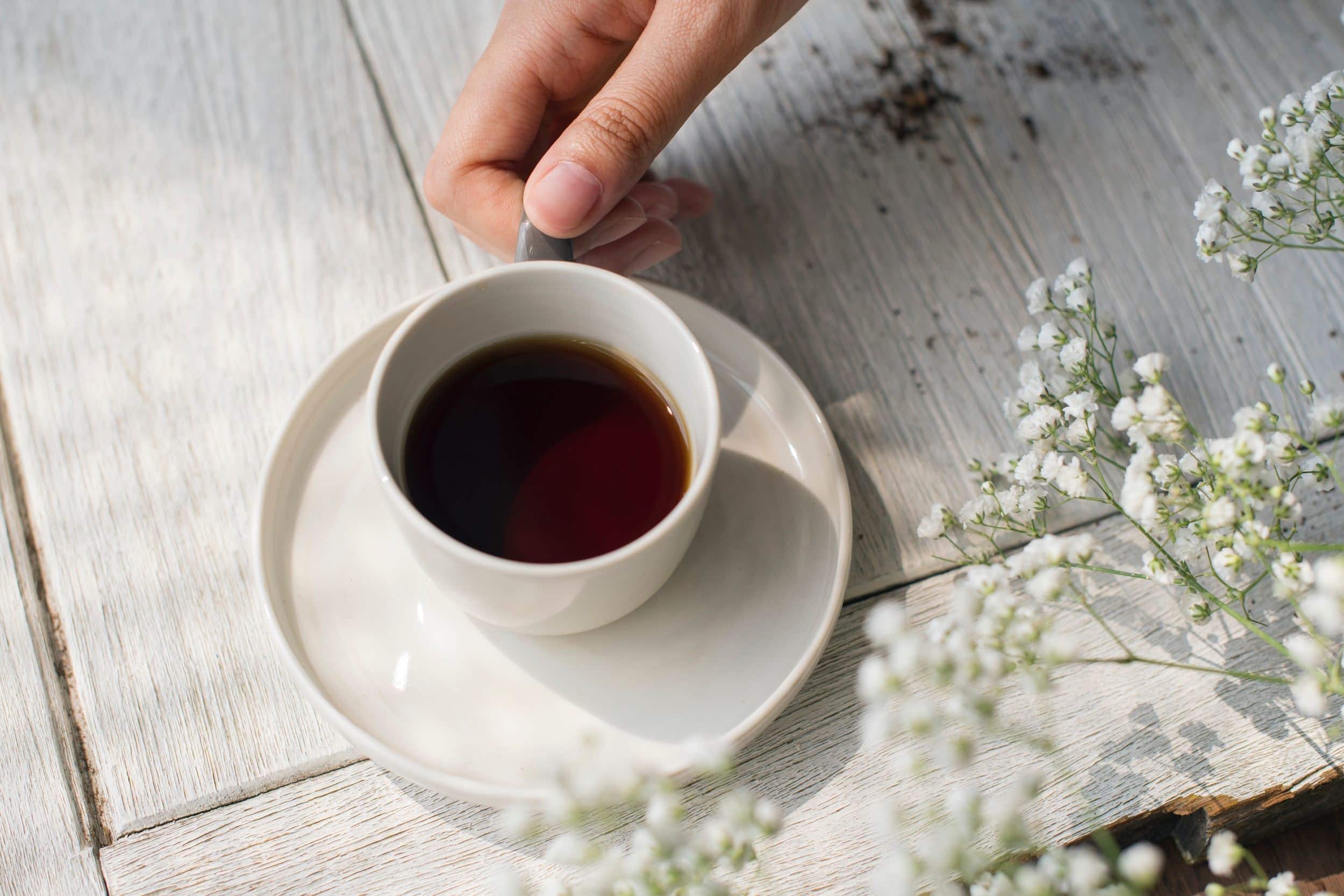Anxiety disorders are the most common mental health conditions in the USA, with over 31% of people experiencing anxiety sometime in their lives. While some people overcome anxiety, over 17% of adults will experience it for their entire lives1.
Symptoms of anxiety:
- Fearfulness and nervousness
- Muscular tension
- Feelings of irritation or agitation
- Difficulty breathing
- Brain fog or panicked thinking
- Pre-occupied thinking or “worrying”
- Fast heart rate
- Sluggish digestion, reflux, bloating or heartburn
- Panic attacks
- Hot and cold flushes
- Tight feeling in the chest
- Quick breathing- Catastrophic thinking
- Avoiding situations that cause anxiety
There are four main types of anxiety disorders – generalized anxiety disorder, social anxiety, specific phobias, and panic disorder. Here's what researchers believe is behind them all, bio-medically and holistically:
1) Neurotransmitter & Hormone Imbalances
Neurotransmitters are chemicals that nerve cells and neurons use to communicate to one another. They control a massive range of physiological functions in the body, like mood, cognition, digestion, and even vision. Likewise, hormones act as communicators between cells and influence all aspects of human physiology including the nervous system.
Research suggests that the main neurotransmitters and hormones that are out of balance in anxiety include:
LOW:
Serotonin: Feel-good, happy neurotransmitter that promotes feelings of joy. Motivation andGABA: Natural, deep relaxation and a sense of wellbeing, peace, and ease.Dopamine: Feeling of achievement, motivation, focus, bliss, pleasure, and appetite control.
HIGH:
Glutamate: Excitatory, stimulating neurotransmitter that can cause jitters, sweating, “busy mind” and worrying.Noradrenaline: A stress hormone released from the adrenal glands that initiates the physical reaction to fight-or-flight response. Think sweaty palms, fast rate rate, high blood sugar, and rapid breathing.
While we believe these are the key neurotransmitters and hormones involved in anxiety, disruption to any others can trigger an imbalance, too. Everything needs to be at equilibrium.
High GI foods release too much sugar into the blood too quickly for the body to keep up. This high levels of sugar doesn't cause symptoms of anxiety but it does cause a rush of the hormone insulin to be released.
Reactive low blood sugar is a kind of “bounce back” effect that occurs after a huge release of insulin has sucked sugar out of the blood – it goes a bit overboard, and you're left with blood sugar levels that are too low. It's reactive low blood sugar that triggers symptoms of feeling jittery and shaky, sweating, irritability and confusion, also known as a “sugar crash”. Because norepinephrine can skyrocket blood sugar levels, people with anxiety are more likely to experience reactive low blood sugar.
3) The pH Connection
The amygdala, an almond-shaped structure positioned deep within the brain, is the seat of the fear response – both learned fear from our life experiences, and instinctual fears. In general, the pH in this area of the brain is tightly regulated. Any rise or fall in pH can affect the communication between synapses and trigger the amygdala to promote a fear response. There are two main ways we affect the pH in our bodies: diet, and breath.

People with anxiety tend to breathe short, quick “shallow” breaths, and hyperventilation often occurs in people who experience panic attacks. With this type of respiration, there is a higher level of CO2 in the blood, causing too much of an alkaline state (particularly in the brain). At the same time, a lack of oxygen means that the Kreb's cycle can't produce energy from glucose. Instead, glucose is used to create lactic acid. Lactic acid creates a more alkaline environment – further triggering the amygdala's fear response.
It becomes a vicious cycle, which is why anxiety attacks and panic attacks aren't something people can just “snap out of” – when the amygdala causes a fear response, an anxiety attack occurs and triggers hyperventilation; lack of oxygen and too much CO2 create an alkaline pH; the pH triggers the amygdala to cause a further fear response. Dietary issues that cause a shift in pH can also trigger the amygdala and initiate this cycle45.
Unfortunately, these nutrients are quickly eliminated from the body during times of stress and inflammation. It's another viscous cycle – low levels of these nutrients can contribute to unchecked inflammation and anxiety; and anxiety further depletes their levels.
5 Essential Diet Changes to Relieve Anxiety
Good news – hundreds of studies have concluded that there is a direct link between nutrition and mental health outcomes8. Eating a standard Westernized diet of refined grains, processed meat, and fried foods is associated with a higher risk of developing both anxiety and depression, and is especially linked to poor mental health in adolescents910.
Here are five easy changes to move away from that standard diet to one that specifically supports mental and emotional health to relieve symptoms of anxiety:
1) Protein At Every Meal to Balance Neurotransmitters
Boosting protein in the diet is the foundation of treatment for anxiety. Without adequate protein, blood sugar will inevitably be out of balance, and neurotransmitters can't be created let alone balanced.
Protein is made of small molecules called amino acids. These are the foundational building blocks of everything in the body, including brain cells, tissues in the nervous system, hormones and neurotransmitters.

Foods contain different types of amino acids, and each neurotransmitter requires a different foundational amino acid, so getting enough total protein each day is essential. Nutritionists commonly recommend that people recovering from a protein insufficiency should eat 1g of protein per 1kg of body weight. For example, if you weigh 70kg, you should eat 70g of protein per day. Generally speaking, if you eat adequate amounts of protein each day then you most likely get a wide range of foundational amino acids, but if you want to boost specific neurotransmitters, try including these key foods in your daily diet:
- Tryptophan creates serotonin & melatonin: walnuts, quinoa, pumpkin, leafy green vegetables.
- Glutamine creates GABA*: Lentils, peas, beans, gluten-free oats, brown rice and other whole grains.
- Phenylalanine creates dopamine: Quinoa, brown rice, and other whole grains, sesame seeds and tahini, pecans, chickpeas, and lentils.
- Valine has its own direct anti-anxiety effects and promotes emotional calm, muscle relaxation and recovery: Beans, legumes, and broccoli.
Note: Glutamine is first converted to the excitatory neurotransmitter, glutamate, before it becomes GABA. To assist this final conversion, make sure you are getting plenty of B vitamins (see point #3)!
If you find it difficult to boost these amino acids in your diet, or if anxiety is having a large impact on your life, consider taking a nopal cactus supplement. It contains key amino acids and cofactors for the production of these neurotransmitters11.
2) Choose Complex Carbohydrates to Balance Blood Sugar
While refined carbohydrates cause a rush of glucose into the blood, complex carbs take longer to digest and therefore supply a steady stream of sugars into the blood. No sugar rush, and no reactive low blood sugar “crash” either. Complex carbohydrates sources are often also rich in protein and fibre – the perfect recipe for slow release, low GI meals that make you feel satisfied for longer.
Along with basic amino acids as their building blocks, many neurotransmitters require carbohydrates for their release and action. Serotonin, in particular, requires insulin – a hormone that is released after we eat carbohydrates. Insulin transports glucose out of the blood and into the cells, but it can also transport other compounds. The precursors for serotonin, such as tryptophan, require insulin to carry them across the blood brain barrier – a selective membrane that separates the sensitive brain from general circulation. Once inside the brain, these precursors can create serotonin – hello, feel-good vibes!
NOTE: As the sun sets, serotonin is converted into melatonin. This neurotransmitter initiates sleepiness and relaxation heading towards bed time. If anxiety is messing with your sleep cycle, try eating a small snack containing complex carbs about an hour before bed, such as whole oats or brown rice. This may give your brain the boost of serotonin it needs to create enough melatonin.
3) Nutrient-Dense Vegetables to Balance pH & Remedy Nutrient Deficiencies
Vegetables are the most nutrient-packed foods you can eat. As a cornerstone of a whole food diet, vegetables balance pH and supply the vitamins, minerals and phytonutrients needed to remedy anxiety-related deficiencies. Bright coloured vegetables like kale, beets and artichokes deliver powerful antioxidants that can reduce inflammation. Leafy green vegetables like broccoli, spinach and swiss chard are rich in magnesium which can soothe the nervous system and relieve muscle tension. Asparagus is rich in B vitamins that the body needs to create soothing neurotransmitters like GABA, and avocado supplies plenty of potassium to balance pH.

4) Pineapple, Papaya and ACV to Support Your Digestion
Packing your diet with nutrient-rich foods won't do much if you can't get the vitamins, minerals, and amino acids out of it. Unfortunately, the release of stomach acid, bile, and other digestive secretions is blocked by anxiety signals from the amygdala. Good news – there are a few hacks you can use to circumvent those effects, boost your digestion, and get the most out of your food:
- Chew your food thoroughly. The mouth is the first site of digestion, and chewing is required to signal the rest of the digestive system that food is on its way. Anxious folks are notoriously fast eaters. Aim for 40 – 100 chews per mouthful -- food should be thoroughly pureed before swallowing.
- Take a digestive enzyme half an hour before each meal, or take 1 tsp of apple cider vinegar (diluted in water) with or after heavy meals.
- Eat bitter greens like arugula before a fatty meal to stimulate the gall bladder to release bile so that fats and fat-soluble vitamins will be fully absorbed.
- Eat pineapple or papaya with protein-rich meals. They contain natural protein-digesting enzymes!
- Relax and be present with your meal. Easier said than done while suffering from anxiety, we know. Try applying mindfulness techniques, breathing exercises and muscle relaxation before, during and after you eat. The longer you allow yourself to relax, the more nutrients you will absorb.
- Enjoy your meal with people you like spending time with. A happy mood can boost digestion, too.
5) Quit Stimulants to Relax Your Nervous System
CaffeineCaffeine found in tea, coffee and even chocolate is a psychoactive drug that can exacerbate anxiety12. It works on the central nervous system and stimulates the release of stress hormones like epinephrine and norepinephrine, while boosting heart rate and blood pressures – very similarly to anxiety, right? It also directly affects the brain.
Caffeine is uniquely able to cross the blood brain barrier where it disrupts the balance of neurotransmitters. Specifically, caffeine blocks the receptors that detect levels of GABA and adenosine – neurotransmitters that promotes feelings of relaxation, calmness, and happiness. At the same time, caffeine boosts levels of dopamine and acetylcholine – great chemicals for motivation, focus and productivity... but in people with anxiety, this increase of stimulatory neurotransmitters can feel overwhelming and can even trigger panic attacks13.
Even worse, caffeine can undo a lot of work you may have already put into your diet – it increases the depletion of key anti-anxiety nutrients, and can completely wreck blood sugar regulation and initiate reactive hypoglycaemia. It can also cause insomnia, or at the very least decrease your quality of sleep. The brain requires deep, satisfying sleep in order to repair itself and create new brain cells. Caffeine can shut down this process by blocking adenosine, and making it impossible for the brain to enter into deep REM – if you're waking up with morning anxiety, it could be because of caffeine!
Sources of Caffeine:
- Coffee
- Black tea
- Ice tea
- Green tea
- Matcha
- Chocolate
- Cacao
- Cocoa
- Energy drinks
- Caffeinated soda
Note: Green tea and matcha contain an amino acid called L-theanine that can counteract the excessive stimulation from caffeine and has even been shown to reduce anxiety. It binds to excitatory neurotransmitter receptors in the brain, and blocks their activation. If you are having a hard time going cold-turkey from caffeine, switch to green tea instead.
Alcohol
Believe it or not, alcohol is both a depressant and a stimulant. It may make you feel drowsy, but it also deprives the brain of GABA and serotonin by blocking the synthesis of these essential feel-good neurotransmitters14.
MSG
Monosodium glutamate is a seasoning used in many Asian cuisines including Chinese and Indian food. Note the “glutamate” in the name – this flavoring contains the amino acid and neurotransmitter glutamate that has an excitatory effect on the brain and nervous system. Try cutting it out of your diet to feel
Anxiety can be frustrating and even debilitating. But you're not alone – it's something you have in common with over 30% of the population. You may experience immediate relief from your symptoms after pro-actively taking up just one or all five of these dietary changes – but give yourself at least 3 weeks to notice significant changes as your physiology shifts from anxious reactions to calm responses.
References:
- National Institute of Mental Health (2017) Prevalence of Any Anxiety Disorder Among Adults. https://www.nimh.nih.gov/health/statistics/any-anxiety-disorder.shtml
- Gangwisch, J. E., et al. (2015) High glycemic index diet as a risk factor for depression: analyses from the Women's Health Initiative. Am J Clin Nutr.102 (2), 454-63.https://www.ncbi.nlm.nih.gov/pubmed/26109579/
- Haghighatdoost, F., et al. (2016) Glycemic index, glycemic load, and common psychological disorders. Am J Clin Nutr., 103:1, 201-9. https://www.ncbi.nlm.nih.gov/pubmed/26607943/
- Wemmie, J. A. (2011) Neurobiology of panic and pH chemosensation in the brain. Dialogues Clin Neurosci., 13:4, 475 – 483. https://www.ncbi.nlm.nih.gov/pmc/articles/PMC3263394/
- Vollmer, L. L., et al. (2015) Acid–base dysregulation and chemosensory mechanisms in panic disorder: a translational update. Translational Psychiatry., 5, e572. https://www.nature.com/articles/tp201567
- Türksoy, N., et al., (2014) Vitamin B12, folate, and homocysteine levels in patients with obsessive–compulsive disorder. Neuropsychiatr Dis Treat. 10, 1671 – 1675.https://www.ncbi.nlm.nih.gov/pmc/articles/PMC4164291/
- Xu, Y., et al. (2014) Novel Therapeutic Targets in Depression and Anxiety: Antioxidants as a Candidate Treatment. Curr Neuropharmacol., 12:2, 108 – 119. https://www.ncbi.nlm.nih.gov/pmc/articles/PMC3964743/
- Jacka, F. N. (2017) Nutritional Psychiatry: Where to Next? EbioMedicine., 17, 24 – 27.https://www.ncbi.nlm.nih.gov/pmc/articles/PMC5360575/
- Kulkami, A. A., et al. (2015) Associations between diet quality and mental health in socially disadvantaged New Zealand adolescents. Eur J Clinic Nutr., 69:1, 79 – 83. https://www.ncbi.nlm.nih.gov/pubmed/25028085/
- Ruusunen, A., et al. (2014) Dietary patterns are associated with the prevalence of elevated depressive symptoms and the risk of getting a hospital discharge diagnosis of depression in middle-aged or older Finnish men. Journal of Affective Disorders. 159:1–6. https://www.ncbi.nlm.nih.gov/pubmed/24679382
- El-Mostafa, K., et al. (2014) Nopal cactus (Opuntia ficus-indica) as a source of bioactive compounds for nutrition, health and disease. Molecules., 19:9, 14879 – 901. https://www.ncbi.nlm.nih.gov/pubmed/25232708
- Richards, G. & Smith, A. (2015) Caffeine consumption and self-assessed stress, anxiety, and depression in secondary school children. J Psychopharmacol., 29:12, 1236 – 1247. https://www.ncbi.nlm.nih.gov/pmc/articles/PMC4668773/
- Smith, J. E., et al. (2012) Storm in a coffee cup: caffeine modifies brain activation to social signals of threat. Soc Cogn Affect Neurosci., 7:7. https://www.ncbi.nlm.nih.gov/pubmed/21972425
- Hendler, R. A., et al. (2013) Stimulant and sedative effects of alcohol. Curr Top Behav Neurosci., 13, https://www.ncbi.nlm.nih.gov/pubmed/21560041


